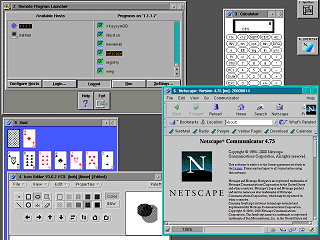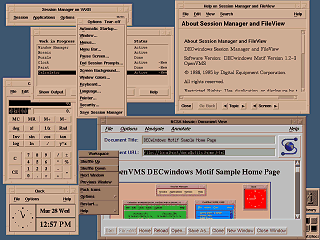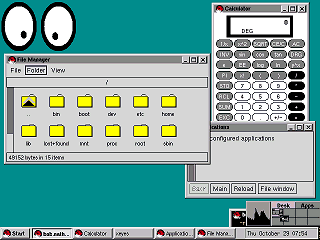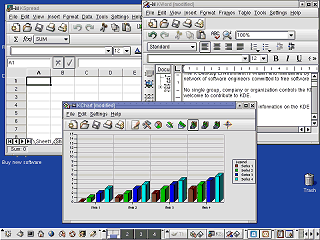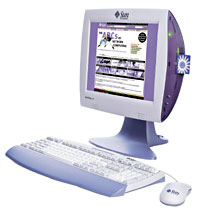|
|
Location: GUIs >
Misc GUIs >
Remote GUIs >
X11 - X Windowing System Previous - Terminal Services screen shots X11 is a network protocol designed for Unix and similar operating systems to enable remote graphical access to applications. The original X windowing system was announced in 1984 and developed at MIT. A machine running an X windowing system can launch a program on a remote computer. All the CPU processing happens on the remote computer but the display of the application appears on the local machine. For a time it was popular to have dedicated "X terminals". Similar to a character cell terminal these terminals had no "brains" except for what was needed to operate their X windowing system. Such terminals started to disappear as personal desktop computers became popular, more powerful, and inexpensive enough to run an X windowing system on top of the installed OS (or to have the applications ported to run locally on the personal computer). Interestingly, today the popularity of similar terminals is slowly picking up again as large businesses realize the need for easily maintainable, interchangeable "thin clients". Although X terminals really did not catch on, the X windowing system did become the standard graphical system for graphical programs running in Unix and Linux environments. These systems use the X11 protocol to draw graphics to their local video display. The local display is treated as a remote display that just happens to be on the same machine. X-windowing applications can still be run remotely, but people usually don't do that. This functionality is also usually restricted these days due to security reasons. Because of the way it works, if there were no security someone else on a network could start an application that displays on your display!
In this picture the only applications that are running locally on the computer the Remote Program Launcher, the AppManager and the DeskView window manager. The rest are X11 apps that are running on a remote Solaris server. Notice that the local window manager draws the title bars and border for all applications even if they are running remotely. No, there was never a version of Netscape for DeskView. The unix versions of Netscape happen to use X11 and therefore their displays can be exported to other client machines running an X-windowing system such as DeskView. (Just a technical note: The software run on client computers is technically referred to as an X "Server" due to the way it operates. Since people find this confusing and and I am trying to be mostly non technical here I will not refer to it as such)
Although graphics and widgets are drawn as instructed by the server, fonts must be loaded on the client computer or X terminal. Like a web browser, if a specific font is not present, an alternative will be substituted.
The X windowing system does not provide any form of printing redirection. Printing is handled completely separately in Unix / Linux.
Sunrays act much like X terminals, however they do not use the X11 protocol. Instead they use a Sun proprietary protocol that currently only works with Sun Solaris. Of course they can be used with other remote applications if the appropriate client software is installed on the Solaris Sunray server. Sunrays have several advantages over traditional X terminals: They can bring application audio to the local machine. Entire desktop sessions can be resumed from a different terminal, and the use of "smart cards" can make moving from one terminal to another easier. |
